
Science China-Physics Mechanics & Astronomy
Scope & Guideline
Exploring the Frontiers of Mechanics and Astronomy
Introduction
Aims and Scopes
- Astrophysics and Cosmology:
The journal publishes research on cosmic phenomena, including black holes, gravitational waves, dark matter, and the structure of the universe, often using observational data and theoretical modeling. - Quantum Mechanics and Quantum Computing:
Research related to quantum phenomena, quantum information theory, and the development of quantum computing technologies are central themes, reflecting the growing importance of quantum theories in modern physics. - Condensed Matter Physics:
Studies focusing on the properties of materials at the atomic level, including superconductivity, magnetism, and electronic properties of various materials, are frequently featured in the journal. - Optics and Photonics:
The journal covers advancements in optical technologies, including laser physics, optical materials, and applications of photonics in communication and sensing. - Plasma Physics and Fluid Dynamics:
Research on the behavior of plasmas and fluid dynamics, especially in astrophysical contexts and experimental setups, is an important aspect of the journal's scope. - Nanotechnology and Material Science:
Papers discussing the synthesis, characterization, and application of nanomaterials, as well as novel materials with unique properties, are a consistent focus. - Interdisciplinary Studies:
The journal encourages interdisciplinary research that combines physics with other fields such as materials science, biology, and engineering.
Trending and Emerging
- Gravitational Waves and Black Hole Physics:
With the advent of advanced gravitational wave detectors, research on gravitational waves and the properties of black holes has surged, reflecting growing interest in observational astrophysics. - Quantum Materials and Topological Phases:
Emerging studies on quantum materials, especially those exhibiting topological phases, are trending, signifying a shift towards understanding complex quantum behaviors in solids. - Artificial Intelligence and Machine Learning in Physics:
There is a rising trend in applying AI and machine learning techniques to solve complex problems in physics, including data analysis, simulations, and theoretical predictions. - Nanophotonics and Metamaterials:
Research on nanophotonics and engineered metamaterials is gaining traction, focusing on their unique optical properties and applications in various technological domains. - High Energy Physics and Dark Matter Research:
Interest in high energy physics, particularly studies related to dark matter and new physics beyond the Standard Model, is on the rise, driven by ongoing experimental discoveries.
Declining or Waning
- Classical Mechanics:
Research related to classical mechanics appears to be waning as the field shifts towards more advanced topics involving quantum mechanics and relativistic physics. - Astrobiology and Planetary Science:
Papers focusing on astrobiology and planetary science are becoming less frequent, possibly due to a greater emphasis on observational astronomy and the mechanics of cosmic phenomena. - Historical and Philosophical Studies of Physics:
There is a noticeable decline in papers that delve into the historical or philosophical implications of physical theories, as the journal increasingly emphasizes empirical and theoretical research.
Similar Journals

ACTA PHYSICA SINICA
Fostering Global Collaboration in Physical SciencesACTA PHYSICA SINICA is a prominent journal published by the Chinese Physical Society, dedicated to the dissemination of groundbreaking research in the field of physics and astronomy. Established in 1993, this journal has consistently contributed to the scientific community by publishing high-quality articles that cover a wide range of topics within general physics and related disciplines. Although currently classified in Q4 of the physics and astronomy category by Scopus, ACTA PHYSICA SINICA plays an important role in fostering collaboration and communication among researchers in China and around the world. With a substantial readership, this journal is poised to remain a valuable resource for professionals, researchers, and students alike. By providing in-depth analysis and insights, it aims to advance the understanding and application of physical principles in various technological and scientific advancements. The journal is accessible via subscription, ensuring that contributors and readers can engage with the evolving landscape of physics research. For more information, visit the publisher's website.
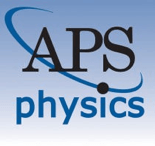
PHYSICAL REVIEW B
Elevating Knowledge in the Sciences of MaterialsPHYSICAL REVIEW B, published by the American Physical Society, is a leading journal in the field of condensed matter physics and materials science, particularly focusing on electronic, optical, and magnetic materials. With an ISSN of 2469-9950 and an E-ISSN of 2469-9969, this periodical has garnered a prestigious reputation, achieving a Q1 ranking in both relevant categories as of 2023. The journal has recorded significant impact as reflected in its Scopus ranks, notably positioned at #95 out of 434 in Condensed Matter Physics and #75 out of 284 in the Materials Science sector, illustrating its importance in advancing research and discussions in these critical areas. Although it does not offer open access, PHYSICAL REVIEW B remains an invaluable resource for academics, researchers, and professionals seeking to increase their understanding of contemporary issues in condensed matter and material sciences. Established in 2005, this journal continues to foster innovation and dissemination of knowledge, making it a cornerstone publication for those engaged in cutting-edge research.

CHINESE PHYSICS LETTERS
Your Gateway to High-Impact Physics ResearchChinese Physics Letters is a prestigious journal published by IOP Publishing Ltd, based in the United Kingdom. Since its inception in 1984, the journal has served as a vital platform for disseminating impactful research in the field of physics, achieving a noteworthy Q1 ranking in the category of Physics and Astronomy (miscellaneous) as of 2023. Renowned for its rapid publication process, this journal is dedicated to providing a forum for high-quality, concise articles that address innovative theoretical and experimental findings relevant to both the academic community and industry practitioners. With an impressive Scopus rank of #52 out of 243, placing it in the 78th percentile, Chinese Physics Letters continues to influence the global physics landscape. Researchers, professionals, and students alike find this journal indispensable for staying abreast of the latest developments and trends in physics.
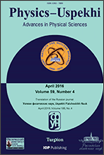
PHYSICS-USPEKHI
Exploring the Frontiers of Physics and AstronomyPHYSICS-USPEKHI, published by Uspekhi Fizicheskikh Nauk, is a prominent peer-reviewed journal in the field of physics and astronomy, reaching researchers and professionals since its inception in 1993. With an ISSN of 1063-7869 and an E-ISSN of 1468-4780, this esteemed journal has been classified as Q2 in the Physics and Astronomy category based on the 2023 quartiles, ranking 74 out of 243 journals in its Scopus classification, placing it in the 69th percentile. Although currently not an open access journal, it provides invaluable insights and advancements in the field, fostering an environment for scholarly exchange and collaborative research. Based in Moscow, Russia, PHYSICS-USPEKHI continues to shape the landscape of theoretical and experimental physics, inviting submissions that contribute to its rich legacy of high-impact scientific discourse.
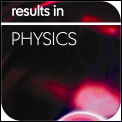
Results in Physics
Exploring New Frontiers in Physics ResearchResults in Physics, an esteemed open-access journal published by ELSEVIER, has been a prominent platform for disseminating cutting-edge research in the field of physics since its establishment in 2011. With its ISSN 2211-3797 and E-ISSN 2211-3797, this journal proudly holds a Q2 ranking in the Physics and Astronomy category for 2023, showcasing its significance and quality within the scientific community. With a remarkable Scopus rank of #28 out of 243 in the general physics and astronomy domain, placing it within the 88th percentile, Results in Physics serves as a vital resource for researchers, professionals, and students alike, fostering a collaborative environment for the advancement of knowledge across various subfields. The journal aims to provide a rapid and unrestricted access to innovative findings, encouraging open scientific dialogue and enhancing the visibility of breakthrough research. Located in the Netherlands at RADARWEG 29, 1043 NX AMSTERDAM, Results in Physics continues to uphold its commitment to excellence and accessibility in the ever-evolving landscape of physics research.

JOURNAL OF EXPERIMENTAL AND THEORETICAL PHYSICS
Unveiling the Mysteries of the Physical UniverseJournal of Experimental and Theoretical Physics is a distinguished publication in the field of physics, dedicated to disseminating pioneering research and fostering intellectual discourse in both experimental and theoretical domains. Published by Pleiades Publishing Inc, this journal has established itself as a crucial platform for physicists, with a commendable Q3 categorization in the 2023 rankings within Physics and Astronomy, illustrating its impactful contributions to the discipline. The journal features a wide array of articles that delve into the intricacies of physical theory, experimental techniques, and applications, making it an invaluable resource for researchers, professionals, and students alike. Although it operates under a traditional access model, its longstanding history, dating back to 1980 and converging years through to 2023, underscores its commitment to advancing the frontiers of physics knowledge. The journal is also notable for its engagement in the scientific community, aiming to bridge the gap between theoretical predictions and experimental validations. As a part of Pleiades Publishing, it continues to uphold rigorous standards of academic excellence, inviting contributions that push the boundaries of current understanding and stimulate further exploration in the fascinating world of physics.

PRAMANA-JOURNAL OF PHYSICS
Championing Quality Research in Physics and AstronomyPRAMANA-JOURNAL OF PHYSICS, published by the esteemed Indian Academy of Sciences, serves as a pivotal platform for disseminating high-quality research in the field of Physics and Astronomy. Established in 1973, this journal aims to promote significant findings in various branches of physics, encapsulating both theoretical and experimental research. With a solid reputation reflected in its Q2 ranking in the Physics and Astronomy (miscellaneous) category and a commendable 94/243 rank in the Scopus database, PRAMANA stands at the forefront of the academic community. Researchers, professionals, and students benefit from its accessible compilation of innovative studies, contributing richly to the scholarly discourse. The journal, operating from its base in Bangalore, India, is committed to advancing knowledge through rigorous peer-reviewed articles, ensuring that all contributions hold merit in expanding our understanding of the physical world.
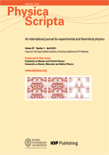
PHYSICA SCRIPTA
Innovating Insights in Atomic and Molecular PhysicsPHYSICA SCRIPTA, established in 1970 and published by IOP Publishing Ltd, is a prestigious journal dedicated to the broad fields of physics, encompassing topics such as atomic and molecular physics, condensed matter physics, and mathematical physics. With an impressive commitment to advancing scientific knowledge, it holds a significant standing in the academic community, evidenced by its Q2 and Q3 rankings across various categories in 2023. The journal is instrumental for researchers, professionals, and students seeking to disseminate and engage with high-quality research, fostering collaboration and innovation within the field. Although it currently does not offer open access options, its robust editorial standards ensure the dissemination of impactful studies, contributing to its rising citation metrics. Published from the United Kingdom, PHYSICA SCRIPTA continues to be a vital resource for contemporary developments in physics, paving the way for future discoveries.
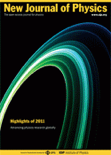
NEW JOURNAL OF PHYSICS
Connecting global minds through groundbreaking physics.NEW JOURNAL OF PHYSICS, published by IOP Publishing Ltd, is a prestigious open-access journal that has been at the forefront of the physics community since its inception in 1998. With an impact factor that places it in the Q1 category of Physics and Astronomy (miscellaneous) and a commendable ranking of #49 out of 243 in the general physics and astronomy category according to Scopus, this journal is recognized for its significant contribution to advancing research in the field. The journal caters to a broad scope of topics, providing a platform for the dissemination of cutting-edge research findings and innovative theoretical explorations. Operating from the United Kingdom, it offers a truly international perspective, making its contents accessible and impactful to a global audience. With robust open-access options, the NEW JOURNAL OF PHYSICS ensures that research findings are freely available, promoting collaboration and knowledge sharing among researchers, professionals, and students alike. This commitment to accessibility, combined with its high-quality content, makes it an essential resource for anyone engaged in the physics community.

Universe
Unveiling the Wonders of the Universe Through Research.Universe is a distinguished peer-reviewed journal published by MDPI, specializing in the dynamic fields of Physics and Astronomy. Established in 2015, this Open Access journal has rapidly gained recognition, achieving a prestigious Q1 quartile ranking in its category as of 2023. With its E-ISSN 2218-1997, the journal primarily serves the international scientific community, offering a platform for researchers to disseminate innovative ideas and findings. Based in Switzerland, Universe covers a wide range of topics within astronomy and astrophysics, ensuring that cutting-edge research is accessible to an ever-growing audience. Its commitment to open access principles since its inception allows for unrestricted dissemination of knowledge, fostering a collaborative environment essential for scientific advancement. By aligning its objectives with the promotion of high-quality research and interdisciplinary discourse, Universe stands as a vital resource for academics, professionals, and students aiming to contribute to and engage with the ever-evolving landscape of astronomical research.